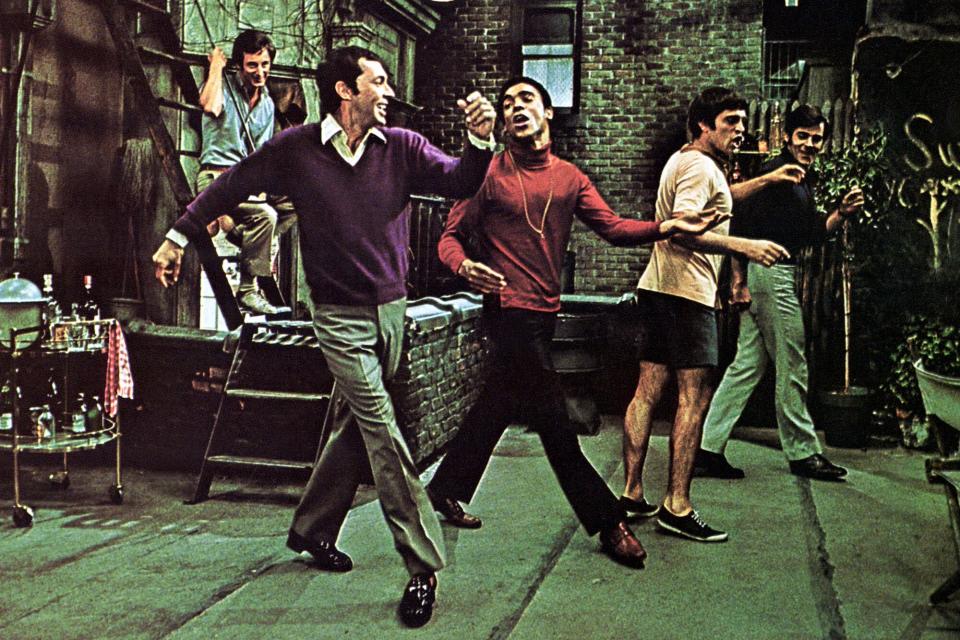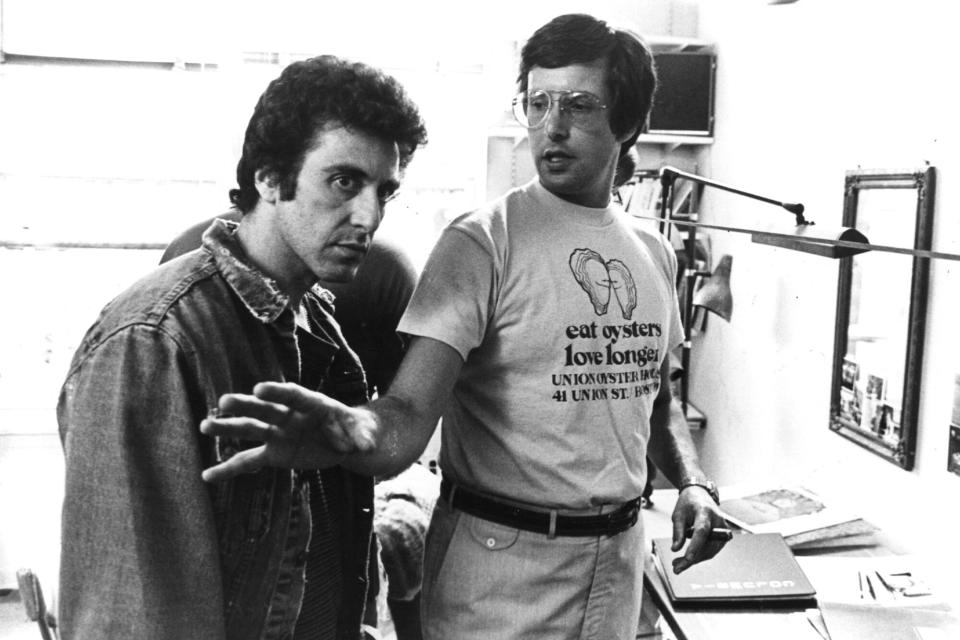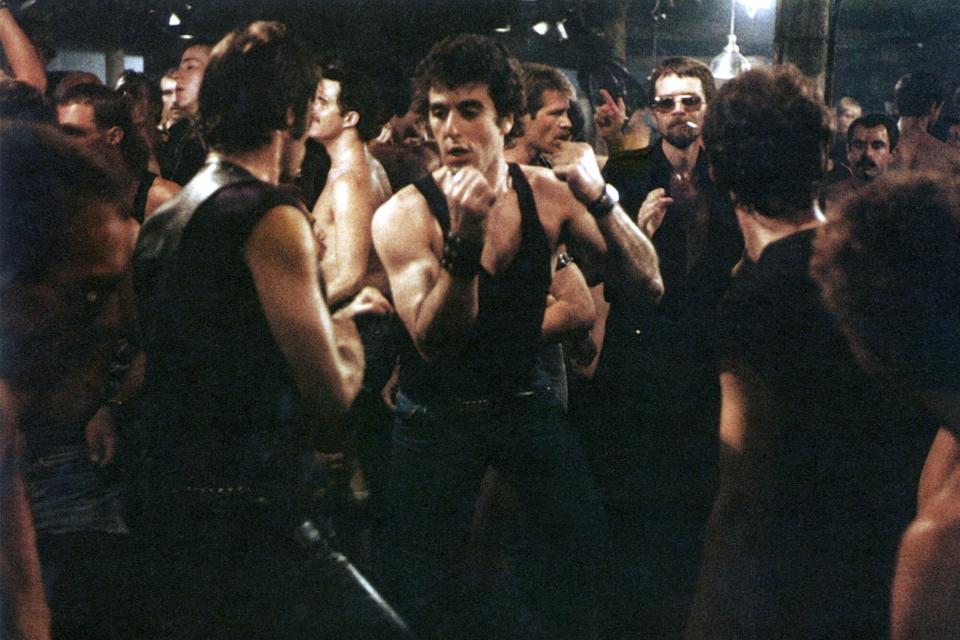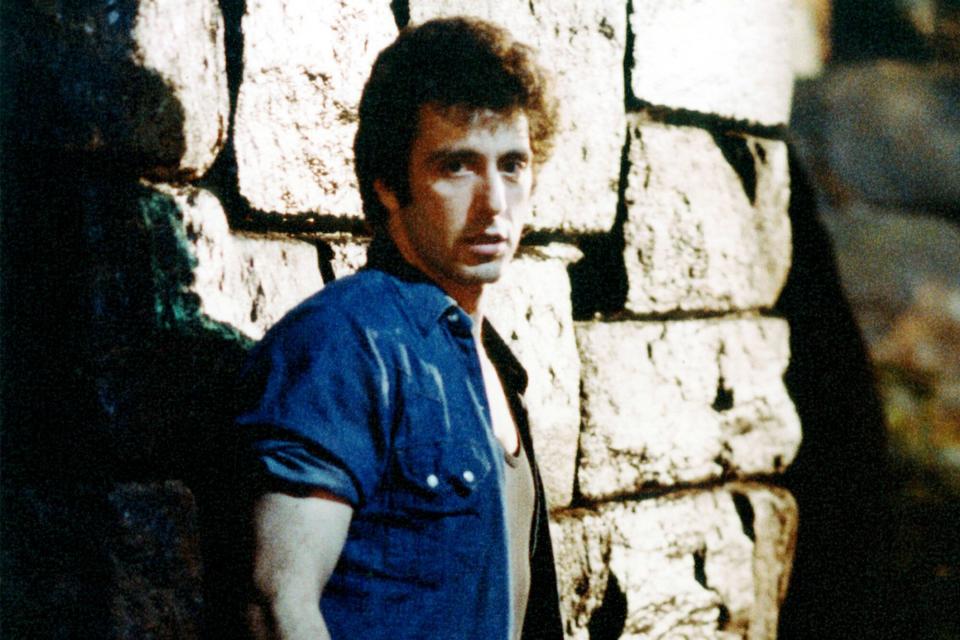From The Boys in the Band to Cruising : William Friedkin's very gay decade

William Friedkin, who died Aug. 7 at age 87, will probably be best remembered for two films he directed in the 1970s — 1971's The French Connection, for which he won the Best Director Oscar, and 1973's The Exorcist, the first horror film nominated for a Best Picture Oscar.
Friedkin's film legacy could easily be summed up by those two classics, but more interestingly, the director's most successful decade was bookended by two films that were outliers at the time for Hollywood productions.
The Boys in the Band, based on Mart Crowley's 1968 off-Broadway play of the same name, was released in March of 1970, and Cruising, based on the 1970 novel of the same name by Gerald Walker, was released in February 1980. Both explore gay life in New York, post-Stonewall, pre-AIDS, offering a glimpse of an all-too brief epoch in gay (it being the '70s and thus pre-LGBTQ+) life.

Everett Collection 'The Boys in the Band' (1970)
The Boys in the Band is fun. Until it's not. A group of gay friends are just kiki'ing, having a good time, getting ready to celebrate the birthday of their vicious frenemy Harold. But as soon as Harold arrives, and the booze starts flowing, things get very Who's Afraid of Virginia Woolf? as resentments and unpleasant truths come to the surface through a sadistic party game.
From there, the gays become, in the words of All About Eve's Hays-coded gay villain Addison DeWitt, "maudlin and full of self-pity." But there's nothing "magnificent" about them. They just revel in their neuroses, loneliness, depression, and self-loathing. Not that one can blame them.
Being gay was still considered a mental disorder until 1973. Any one of these characters, all gay men save for one obtrusive straight, could be committed on the basis of their existence. So when society tells you, in no uncertain terms, that something is wrong with you, you're likely to believe it.
For all its maudlin self-pity, The Boys in the Band is still pretty remarkable for how unremarkable it is. The entire film is about a birthday party. It takes place over a couple of hours but the biggest gag is that nearly all the characters are gay. They may not be the most fleshed-out characters, but they're here, they're queer, and no one was used to it.
Not when gay characters were so often depicted as monsters or victims and nearly always died, by their hand or someone else's. But more on that later. The Boys in the Band was unlike anything Hollywood had produced before.
"I hear from guys all the time that this was the film that helped them come out of the closet," Friedkin told the New York Post in 2018. "It gave them the courage not to be ashamed."
That year, 2018, saw a Broadway revival of Crowley's play starring an openly gay cast that included Matt Bomer, Andrew Rannells, Zachary Quinto, and Jim Parsons. Ryan Murphy then adapted that production, with the same cast, for a Netflix film in 2020.

Netflix 'The Boys in the Band' (2020)
The year 1978, two years before the release of Cruising, proved a landmark year for gay narratives with the release of the novels Andrew Holleran's Dancer from the Dance, Edmund White's Nocturnes for the King of Naples, and Larry Kramer's Faggots.
Those books articulated a forgotten world, one demolished by the following decade and made impossible by the previous, in which gay men indulged in consequence-free sex, experiencing a hitherto impossible freedom amid the throes of queer liberation.
In those books, sex was fun, romantic, depressing, hopeful, hopeless — in other words, fully human. The sex was also, most importantly, sexy. Cruising is clearly made by people who've never had, been around, or even heard of gay sex. It's so unsexy. It's also so dehumanized. I never thought an orgy full of dudes with '70s pornstaches in cop drag could be so...boring. So sterile.

Everett Collection Al Pacino, left, and William Friedkin on the set of 'Cruising'
But Cruising, despite its sexual overtones, is nothing more than a cheap thriller, a horror film lacking both style and substance, in which "the monster," as Vito Russo writes in The Celluloid Closet, "is homosexuality itself."
"Ever had your c--k sucked by a man?" Paul Sorvino's police Captain Edelson asks Al Pacino's perplexed cop Steve Burns. "Ever been porked? Or have a man smoke your pole?"
Edelson seems to be enjoying this line of questioning a bit too much. Burns, meanwhile, is tasked with going undercover to find a serial killer murdering gay men. He fits the killer's type, "late 20s," Sorvino says.
Before too long, actually almost immediately, Burns finds himself getting lost in character. The gumshoe becomes a tourist of gay life in 1979 New York, bringing the audience along with him as he gets a crash course in hanky culture, only to get admonished for falsely teasing his interest in watersports.
We see Burns going to leather bars, working out obsessively in front of a mirror, cruising at night in the park, and generally having a really awful time. Burns takes no joy in playing it gay, but the role is bleeding into his real life — not that there's much to his real life to begin with except his nondescript, long-suffering girlfriend, played by Karen Allen.
The film's most famous, or infamous, scene features Pacino, tits out, on a dance floor, huffing poppers from a dirty rag, violently pumping his fists as if he's seconds away from screaming "HOO-AH!" to what is definitely not disco.

Everett Collection Al Pacino in 'Cruising'
In fact, I'm not sure what's going on with the music in this film. It sounds like some post-apocalyptic honky tonk and yet disco, the soundtrack of gay and Black and brown nightlife, is nowhere to be heard. It's 1979-80, Donna Summer is right there. Toot-tooting and beep-beeping her way to the top of the charts.
But Cruising, just as Sorvino dryly explains to Pacino about his very specific mission, isn't concerned with the "mainstream of gay life" — that is the more nuanced, everygay's everyday existence — but "a world unto itself" of "heavy leather, S&M."
The film does acknowledge that homosexuals can have real jobs and live in the daylight as well as be a part of this other world unto itself, but their sex lives are a source of humiliation, degradation, and lest we forget, bloody murder.
Before it ever opened, Cruising rubbed the gays the wrong way. Wary of further being portrayed as murderers and villains — thanks to years and years of Hollywood's reliable defamation — New York's gay community organized in droves.
"They protested by the hundreds at the sites of location shoots," EW's Mark Harris wrote on the occasion of the film's DVD release in 2007. "They rented apartments next to rooms where Cruising was filming, making so much noise that much of its dialogue had to be rerecorded after production...They stood on rooftops, wielding huge reflectors to spoil the cinematography."
Leave it to the gays to use real estate as a weapon.
Harris notes that Cruising was the "flashpoint at which gay people learned to fight homophobic stereotypes in pop culture." In other words, Cruising was a movie so bad, so offensive, it might as well have thrown the first brick at Stonewall.

Everett Collection Al Pacino in 'Cruising'
Friedkin tried to defend Cruising during his DVD commentary, acknowledging that the film was "not the best foot forward as an argument for the acceptance by heterosexual people of the gay lifestyle." He also claimed that despite thousands of gays protesting the film, there were thousands more who defended it.
That's questionable, but like The Boys in the Band, Cruising has had a longer life outside of its original release — for proof, look no further than James Franco's labored 2013 homage, Interior. Leather Bar. Sure, it will never (and should never) be considered a misunderstood masterpiece because it's just not that good. But it's also not that bad, at least from a perspective of 40-plus years.
The Boys in the Band and Cruising, while both deeply flawed, at least act as time capsules for a period, cut short, in which gay men were learning not only how to live freely but how to exercise that freedom. Even if it meant protesting Al Pacino in a titty tank.
Gay rights!
Want more movie news? Sign up for Entertainment Weekly's free newsletter to get the latest trailers, celebrity interviews, film reviews, and more.
Related content:

 Yahoo News
Yahoo News 
